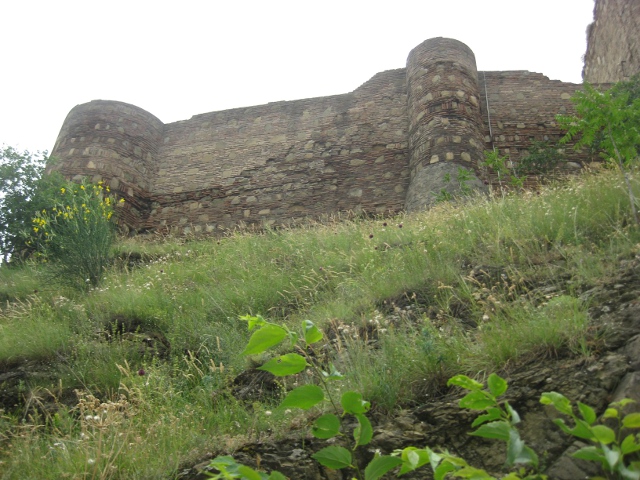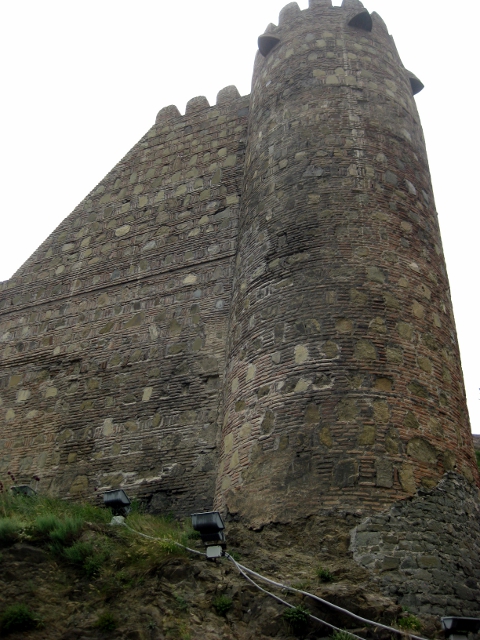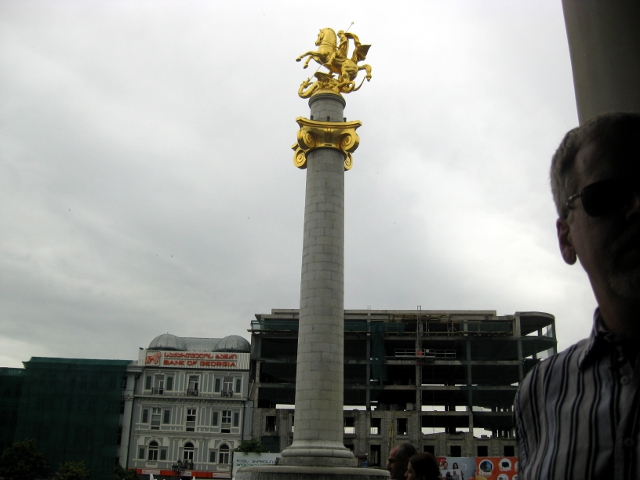
The next day in Tbilisi, Kirsten had arranged for a guide, Marika, to show us around old town. Marika was great, and, as promised, there wasn't a question about Tbilisi to which she didn't know the answer.
Tbilisi is full of statues and traffic circles to hold them. This one is St. George, Georgia's patron saint, slaying the dragon.

As we started on our tour through the old neighborhood, Marika pointed out a building, and said it was built by one of two friends after he became wealthy. Rock carving is a venerable Georgian craft, and each window featured a portrait of the homeowner. She then pointed at the building across the street, and said it was built by the second friend when he became rich. And he specified that it be decorated with his image, sticking out his tongue at his friend's place.
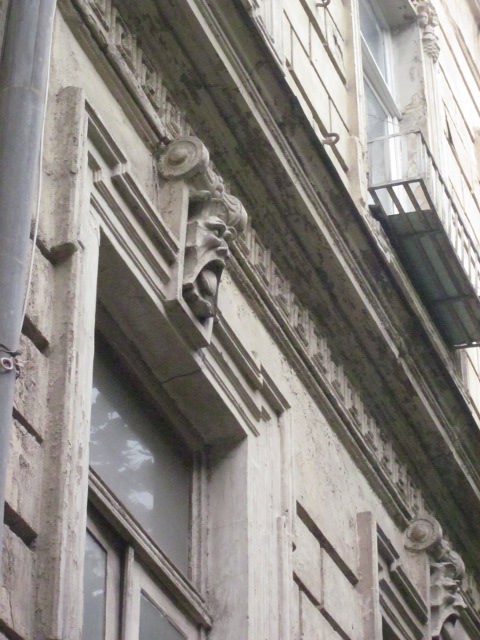
Our goal for the tour was to walk all the way up the hill to Narikala fortress. It's visible from all over Tbilisi, and it is a pretty good hike.
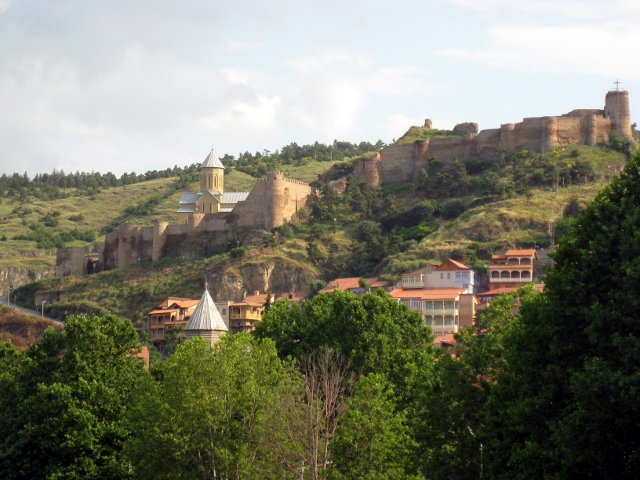
The tour took us through old town Tbilisi. Most of the city was destroyed in an invasion by Persia in 1795, so old town was rebuilt in the 19th century; lots of wooden and iron balconies and pastel houses, in varying states of decay - it reminded both of us a lot of New Orleans' French Quarter.

The walk up to the fortress took a few hours and went through and past a lot. This is a nice way to store your old chairs. Notice the interesting mix of stone & brick, a very Georgian architectural detail.
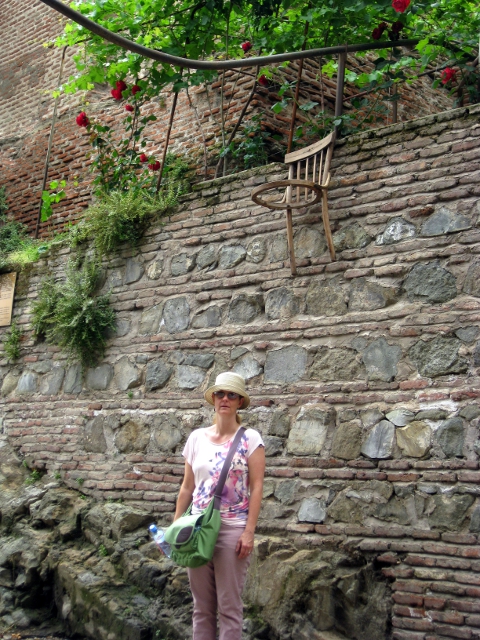
We went through the Betlemi neighborhood, which is named after Bethlehem. We went to the Betlemi Quarter Information Center, which is funded by the Ministry of Foreign Affairs of Norway - yes, Norway. They had information and free postcards. Eero enjoyed it, too.

On the way up the hill, we kept getting nice glimpses of the big aluminum statue of Mother Georgia that overlooks the city.
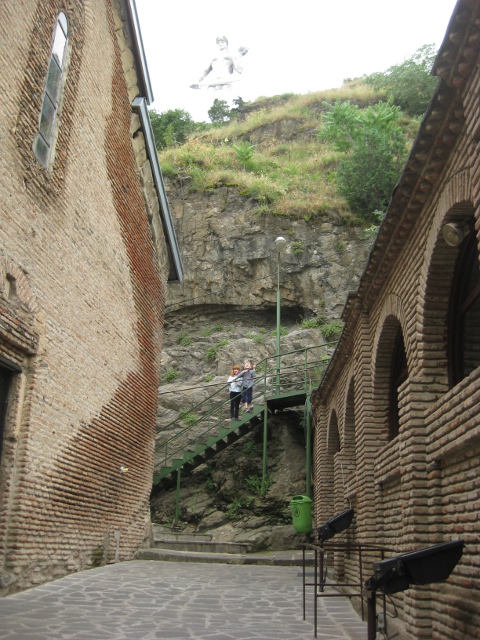
Here's a closer look - her bowl of wine indicates she welcomes visitors, but her sword is ready in case you're not a good guest.
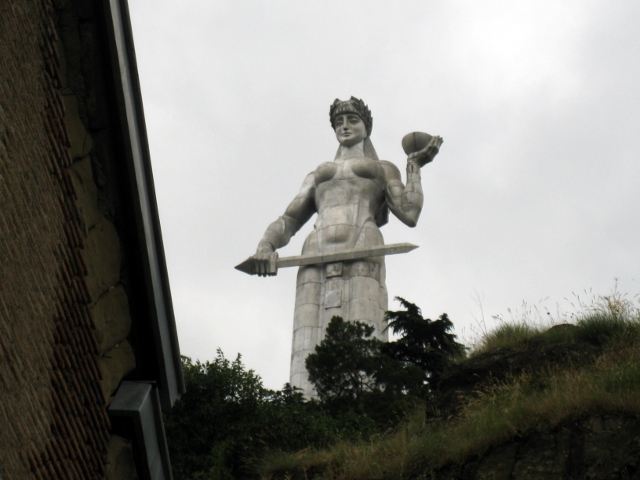
We found the kids were more interested in what was going on when we let them take pictures, too. Eero took this one looking back over the city. It's a rare case where Cielo was willing to look and smile at the camera.
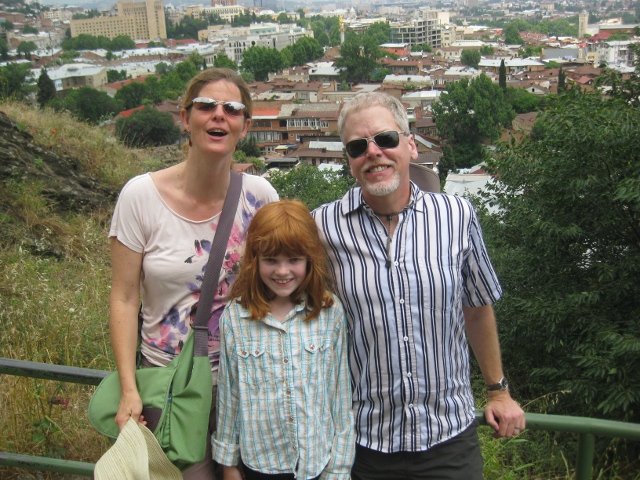
There's St. George again.
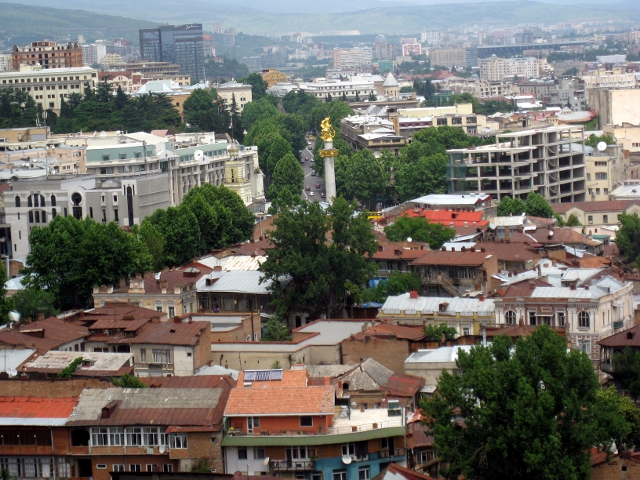
This is Tbilisi's Holy Trinity (Tsminda Sameba) Cathedral (not to be confused with the Tsminda Sameba church in Kazbegi, which we visited later). You can see the gold dome from all over the city.
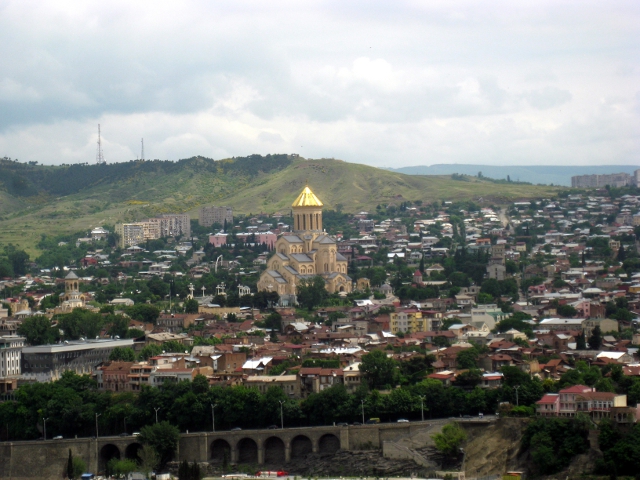
Cielo and Eero played with each other really well through the trip. Typically there'd be a whole day of happiness and play, and five minutes of fight. This looks like fighting, but it was actually play-fencing with water bottles. (This went on not just a long time this day - Cielo and Eero taught Richard the "rules" when we came back.)
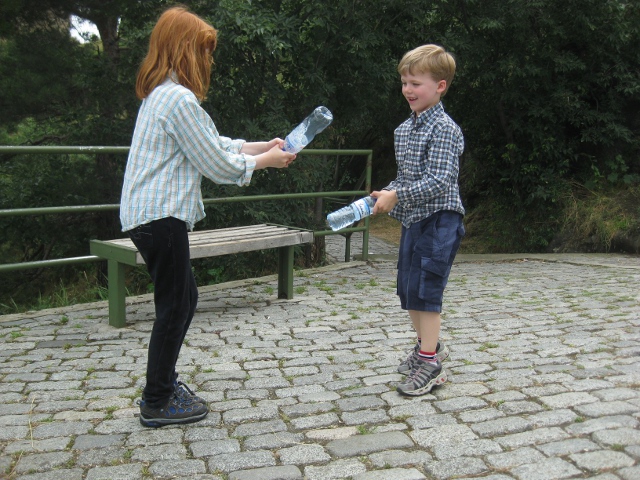
We came across this tree on our walk up the stairs (that's Marika, our guide, on the right). It's a wish tree, where people tie a piece of clothing or cloth and make a wish. But apparently most people don't realize there's a wish tree on this route, so they tie plastic bags on instead.
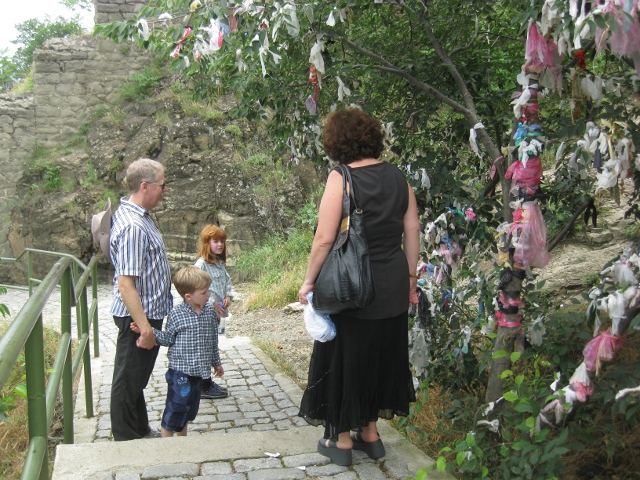
Another nice detail on the way was an interpretive panel honoring Kula Gldaneli, a legendary Georgian wrestler. You can get a small taste of the pretty Georgian alphabet from this sign. The alphabet has 33 letters, and its creation has been attributed to the same monk who created the Armenian alphabet.
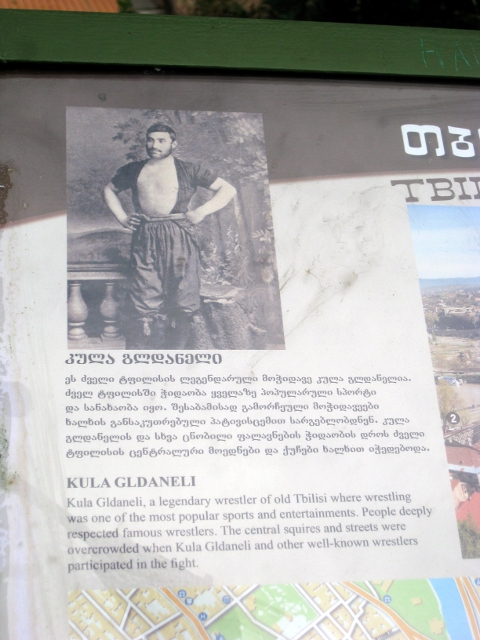
Finally we made it to the fortress. It has beautiful stonework. It was not destroyed in the 1795 invasion; in fact the core of it was built in the 4th century.
